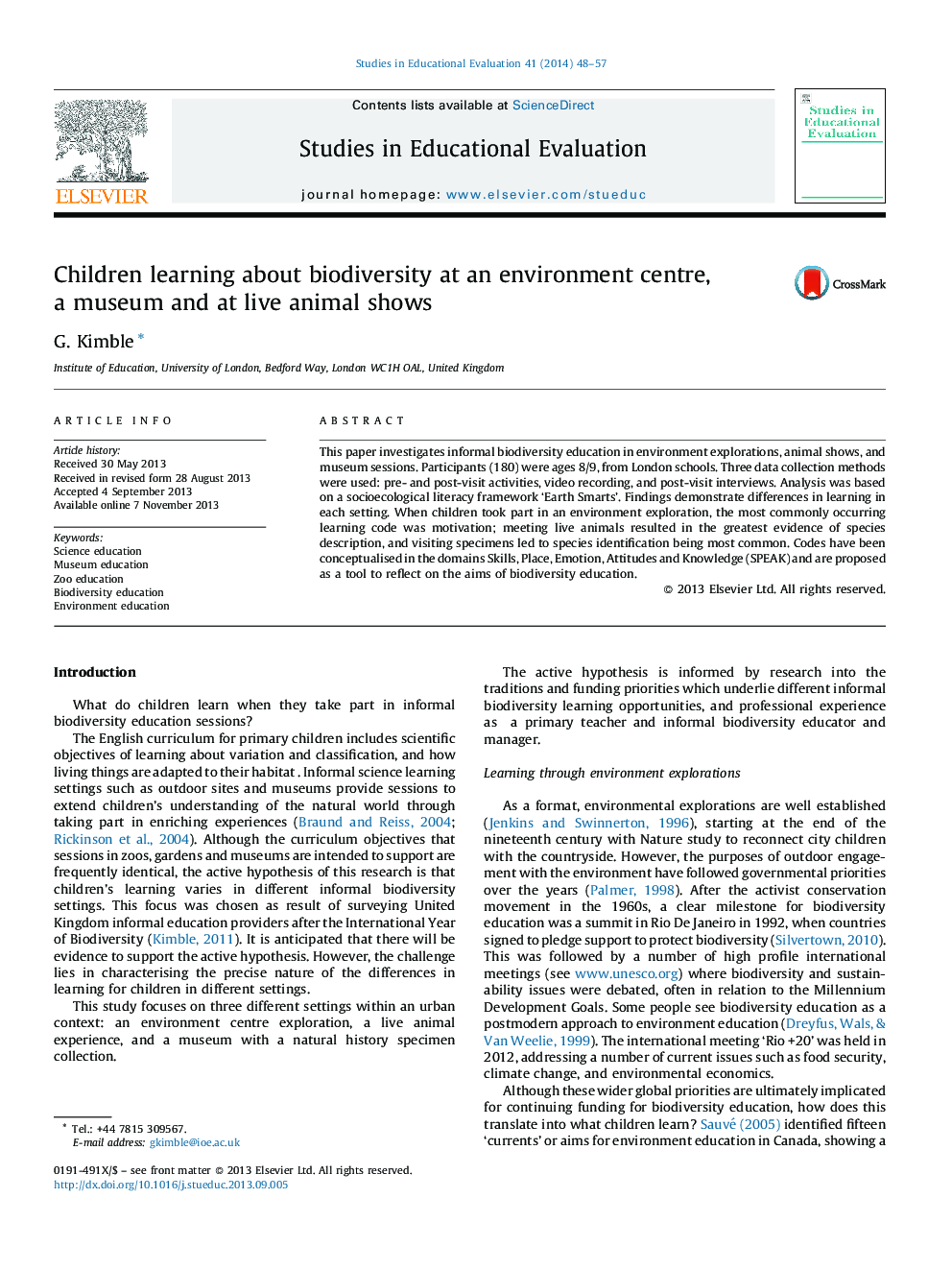| Article ID | Journal | Published Year | Pages | File Type |
|---|---|---|---|---|
| 372642 | Studies in Educational Evaluation | 2014 | 10 Pages |
•This paper compares learning about biodiversity by primary children in an environment centre, animal shows and a museum.•Evidence for learning was seen in domains Skills, Place, Emotion, Attitudes and Knowledge.•Environment explorations showed evidence of motivation, a consequence of discovering wildlife in an authentic situation.•Shows developed children's recall of individual animals and encouraged an attitude of personal responsibility for nature.•Specimen collection visits developed species identification, reading and observation. Pupils formed career attitudes.
This paper investigates informal biodiversity education in environment explorations, animal shows, and museum sessions. Participants (180) were ages 8/9, from London schools. Three data collection methods were used: pre- and post-visit activities, video recording, and post-visit interviews. Analysis was based on a socioecological literacy framework ‘Earth Smarts’. Findings demonstrate differences in learning in each setting. When children took part in an environment exploration, the most commonly occurring learning code was motivation; meeting live animals resulted in the greatest evidence of species description, and visiting specimens led to species identification being most common. Codes have been conceptualised in the domains Skills, Place, Emotion, Attitudes and Knowledge (SPEAK) and are proposed as a tool to reflect on the aims of biodiversity education.
